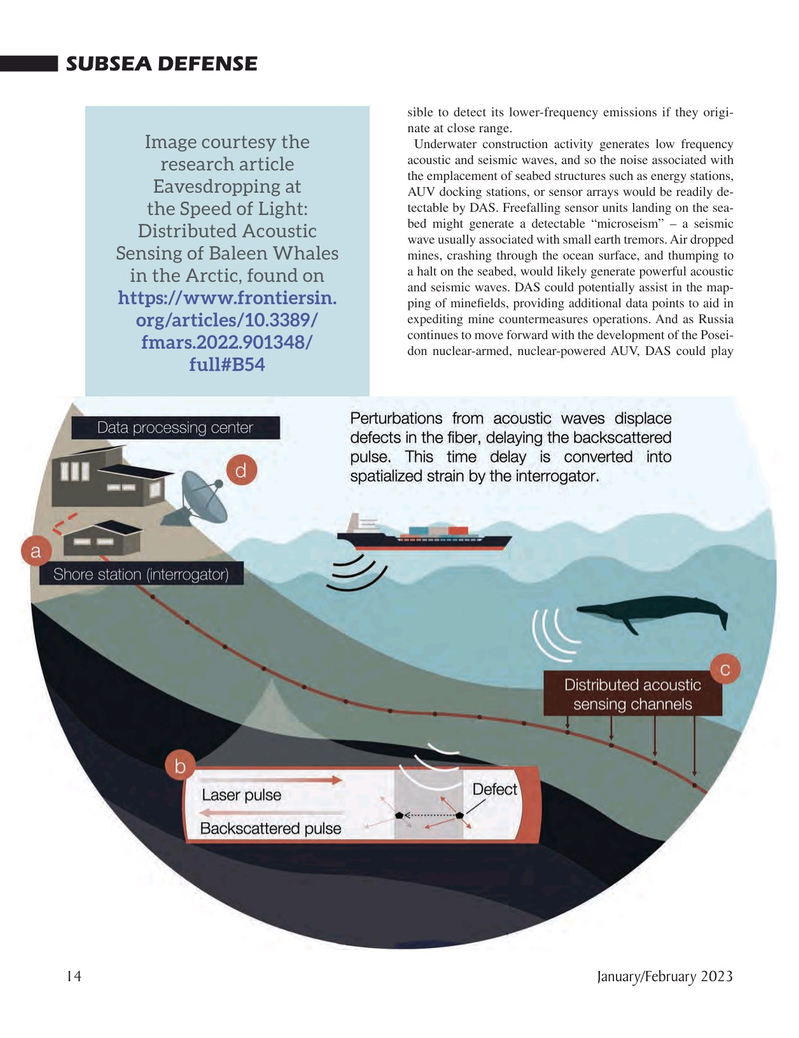
Page 14: of Marine Technology Magazine (January 2023)
Read this page in Pdf, Flash or Html5 edition of January 2023 Marine Technology Magazine
SUBSEA DEFENSE sible to detect its lower-frequency emissions if they origi- nate at close range.
Underwater construction activity generates low frequency
Image courtesy the acoustic and seismic waves, and so the noise associated with research article the emplacement of seabed structures such as energy stations,
Eavesdropping at
AUV docking stations, or sensor arrays would be readily de- tectable by DAS. Freefalling sensor units landing on the sea- the Speed of Light: bed might generate a detectable “microseism” – a seismic
Distributed Acoustic wave usually associated with small earth tremors. Air dropped mines, crashing through the ocean surface, and thumping to
Sensing of Baleen Whales a halt on the seabed, would likely generate powerful acoustic in the Arctic, found on and seismic waves. DAS could potentially assist in the map- https://www.frontiersin.
ping of mine? elds, providing additional data points to aid in expediting mine countermeasures operations. And as Russia org/articles/10.3389/ continues to move forward with the development of the Posei- fmars.2022.901348/ don nuclear-armed, nuclear-powered AUV, DAS could play full#B54 14 January/February 2023
MTR #1 (1-17).indd 14 1/22/2023 8:35:21 PM

 13
13

 15
15
